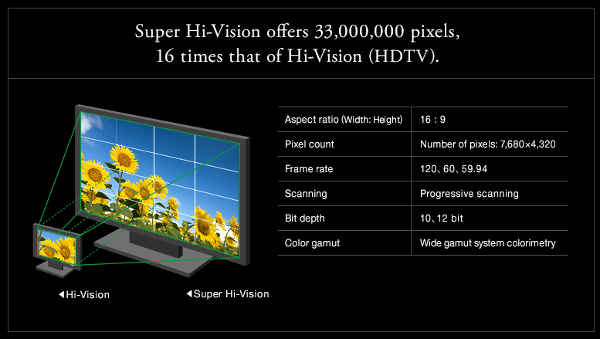All this is moot if there's nothing available to see.
8K Tech Moves Forward but Will We Be Ready for It?

Japan’s NHK continues to actively develop and demonstrate its 8K Super Hi-Vision system, which delivers four times more pixels than UHD and 16 times that of standard HD. The public broadcaster conducted a series of live tests at the 2016 Olympics in Rio and plans to broadcast the 2020 Summer Olympics in Tokyo in 8K. Sony and Panasonic have said they will roll out 8K-compatible TVs in Japan in time for those broadcasts.
But what about 8K infrastructure? Are we anywhere near ready to handle images with 33 million pixels?
In a recent blog post on DisplayDaily.com, video expert Chris Chinnock, founder and president of Insight Media, said 8K connectivity solutions are emerging even though bandwidth requirements for 8K video will be huge, especially when you factor in the impact of high dynamic range (HDR), wide color gamut, 10-bit color (minimum), and color sub-sampling on the data rate, which he calculates will be just shy of 30 gigabits per second (Gb/s).
“For distribution, [8K video] will have to be compressed — and heavily compressed,” Chinnock wrote, but pointed out that the upcoming Version 2.1 of the HDMI connectivity spec will be able to handle the higher data rates.
“In terms of bandwidth, [HDMI 2.1’s] data rate will rise from 18 Gb/s to 48 Gb/s using four lanes running at 12 Gb/s with 16/18 bit encoding that reduces the usable payload to 38.4 Gb/s,” he continued. “That’s a huge increase and is enough to support [8K]. Silicon to support this protocol is not yet available, but should be widely adopted by 2020.
“HDMI 2.1 also supports Display Stream Compression (DSC), a light compression scheme (typically up to 3:1) also used in DisplayPort. This should allow 8K, 16-bit, 4:4:4 at 60 fps or 8K, 16-bit, 4:2:0 at 120 fps over the same four lanes.
“While not all the 8K connectivity has been implemented yet, give it a year or two,” Chinnock concluded. “If that is not enough options and bandwidth, there is also a new interface being standardized by SMPTE called U-SDI. It is a 24-core multimode fiber that runs at a raw data rate of 240 Gbps (lower with error correction), and supports a maximum cable length of 100m.”
- Log in or register to post comments


cool. didn't even know there is a u-sdi connection that can runs at 240 gbps and lower with error correction and up to 100 meters in cable length.
and yeah, i think hdmi 2.1 that runs up to 48 gbps should become mainstream by 2020.

8K? I am not sure if 4K really looks all that good to me despite owning two of the sets. I can't even rip my 4K discs to my hard drives yet, why the rush to 8K? I think there is going to be consumer anger, burn out, revolt. (besides, when North Korea starts the next nasty war, the days of cheap sets will be over for a decade or more, but I digress) I have not even upgraded from 1080P in my theater, and overall, not all that upset. I am starting to figure out that there is much more to picture quality than resolution. Quality optics make a big difference. I saw a 1080P Runco several years ago on a 150 inch screen that blew me away, then last year I saw the 4k Sonly laser at the same place. It was better, but not THAT much better. The Runco made my 1080P Sony look like a toy, even on my smaller 120 inch screen. As with everything, the details make all the difference. I no doubt somewhere in this big wide world Funai pops out 4K sets for the low end masses, and they still have a pale yellow glow of a picture.





























































